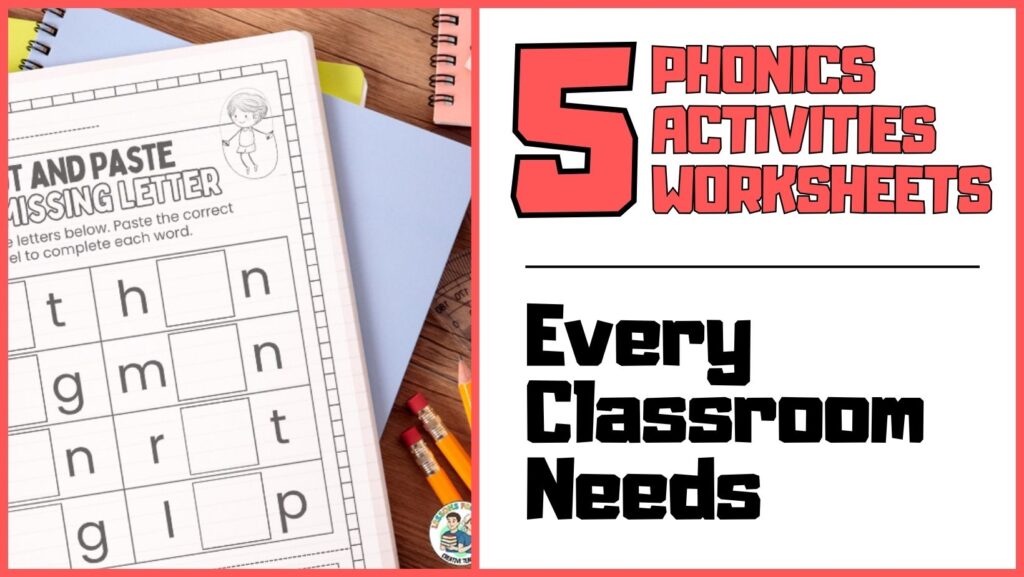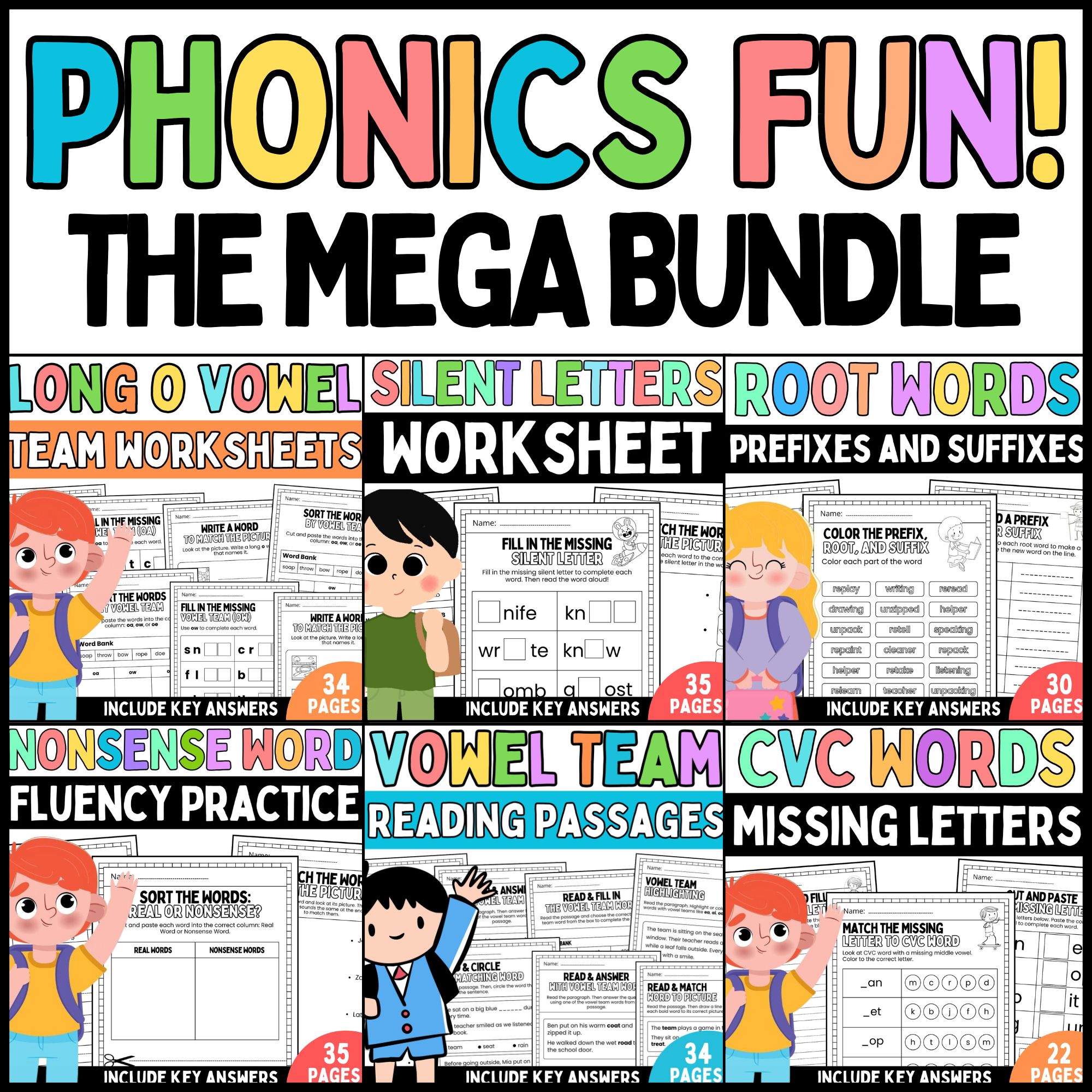Introduction
Phonics is one of the most important building blocks of early literacy. It helps children understand how letters and sounds work together to form words — the foundation for reading and writing success.
But let’s be honest — teaching phonics can be tricky. Some kids pick it up quickly, while others need extra practice and variety to stay engaged. That’s where phonics activities worksheets come in handy! These worksheets turn phonics practice into something fun, interactive, and meaningful. Whether students are blending CVC words, spotting silent letters, or exploring vowel teams, worksheets make learning hands-on and exciting for every learner.
In this post, we’ll explore why phonics is so essential, how to use worksheets effectively, and five must-have phonics activities worksheets that every classroom needs.
Why Phonics Practice Is Essential for Early Readers
Builds Strong Reading Foundations
Phonics is all about connecting sounds to letters. When children learn that the letter “b” makes the /b/ sound or that “oa” says /ō/, they start to decode words on their own. This process helps kids become independent readers.
By using phonics activities worksheets, students can see, say, and write words — reinforcing the connection between sound and print. The more they practice, the stronger their reading foundation becomes.
Improves Spelling and Vocabulary
Good spelling starts with strong phonics knowledge. When students understand how sounds and letters work together, they can spell new words more easily.
For example, a child who has practiced “oa” and “ow” patterns on phonics activities worksheets will know how to spell words like boat, snow, and grow without guessing. This builds vocabulary and confidence in both reading and writing.
Boosts Reading Confidence
Confidence grows with consistency. Kids who regularly use phonics activities worksheets develop fluency — they read smoother, faster, and with better understanding.
Each time a student completes a worksheet, they get to see progress in action. They realize that reading isn’t just about memorizing words — it’s about understanding patterns. And that small win keeps motivation high!
Get Your Free Phonics Pack by Grade Level!
Excited to try these activities? We’ve compiled grade-specific phonics packs to make your planning even easier. Each pack includes tailored activities that align with your child’s learning level:
How to Use Phonics Activities Worksheets Effectively
Start with One Skill at a Time
Phonics is most effective when taught step-by-step. Start with simple skills, like CVC words (cat, dog, sun), before moving on to vowel teams or silent letters.
When using phonics activities worksheets, focus on one sound or rule per session. This helps students master each pattern before introducing a new one. Consistency builds confidence — and confidence leads to mastery.
Mix Hands-On Learning
Phonics practice shouldn’t be just pencil-and-paper! Combine worksheets with games, manipulatives, or storybooks for a multisensory approach.
For example:
-
Use letter tiles to build the words on the worksheet.
-
Read a short story that includes the same sound pattern.
-
Add coloring, cutting, or matching activities to make lessons more active.
By blending movement with worksheets, you’ll keep your students focused and excited to learn.
Review and Reinforce Regularly
Repetition is key! Use phonics activities worksheets for morning work, small group rotations, or homework. Regular exposure helps children retain what they’ve learned.
You can also review old worksheets to see progress over time — kids love realizing how much they’ve improved!
5 Phonics Activities Worksheets Every Classroom Needs
Worksheet 1 – CVC Words Missing Letters
This fun, hands-on worksheet helps students complete CVC (consonant-vowel-consonant) words by cutting, pasting, and tracing the missing vowels.
Focus:
-
Short vowel sounds (a, e, i, o, u)
-
Word building and spelling
-
Early reading fluency
Why it works: CVC words are the foundation of phonics learning. By filling in the missing letters, students strengthen their understanding of how vowels complete a word’s sound pattern.
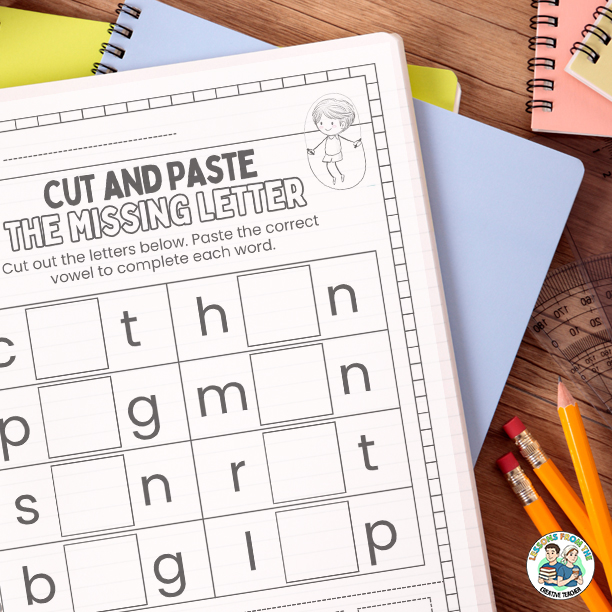
Worksheet 2 – Nonsense Word Fluency Practice
Who says nonsense words can’t be fun? These worksheets invite kids to read, sort, and match silly made-up words like “lat,” “sog,” or “mip.”
Focus:
-
Decoding and blending skills
-
Phonemic awareness
-
Reading fluency
Why it works: Nonsense words help teachers see if students can truly decode sounds — not just memorize real words. It’s a great way to assess phonics mastery in a playful way.

Worksheet 3 – Root Words, Prefixes & Suffixes
Once students are comfortable with basic phonics, it’s time to expand their vocabulary! These worksheets help learners color, sort, and build new words using roots, prefixes, and suffixes.
Focus:
-
Vocabulary development
-
Word structure and meaning
-
Reading comprehension
Why it works: When kids learn how prefixes and suffixes change a word’s meaning, they begin to recognize word families — an essential skill for reading harder texts.
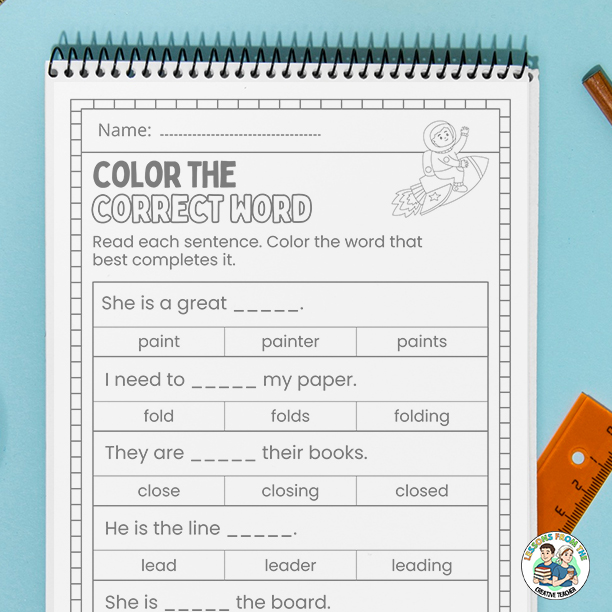
Worksheet 4 – Silent Letters Practice
Silent letters can be confusing — think knight, lamb, or write. These worksheets help students identify, circle, and sort tricky silent letter words.
Focus:
-
Irregular spelling patterns
-
Visual recognition
-
Spelling accuracy
Why it works: By visually spotting and categorizing silent letter words, children become more aware of spelling exceptions and patterns. This improves both reading fluency and written accuracy.
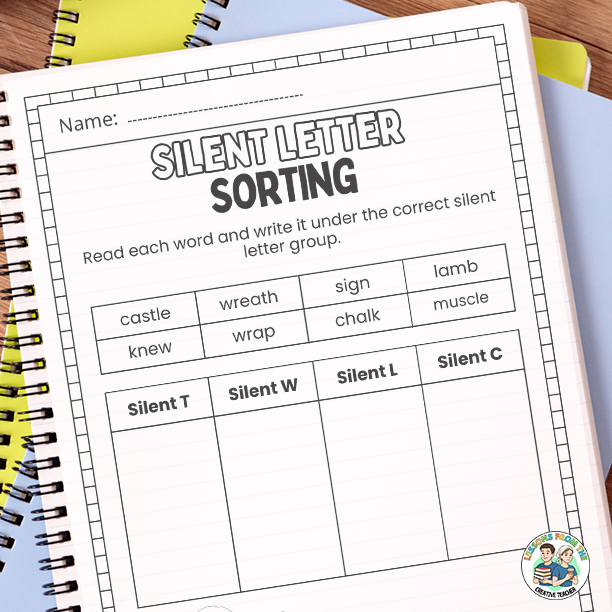
Worksheet 5 – Vowel Team Reading Passages
Ready to challenge your students? This worksheet set features short reading passages filled with vowel team words (like oa, ow, oe). Students can highlight vowel teams, fill in blanks, and answer comprehension questions.
Focus:
-
Reading fluency
-
Vowel team recognition
-
Comprehension practice
Why it works: Kids learn best when phonics and reading work together. These passages help reinforce vowel patterns while building fluency and understanding.
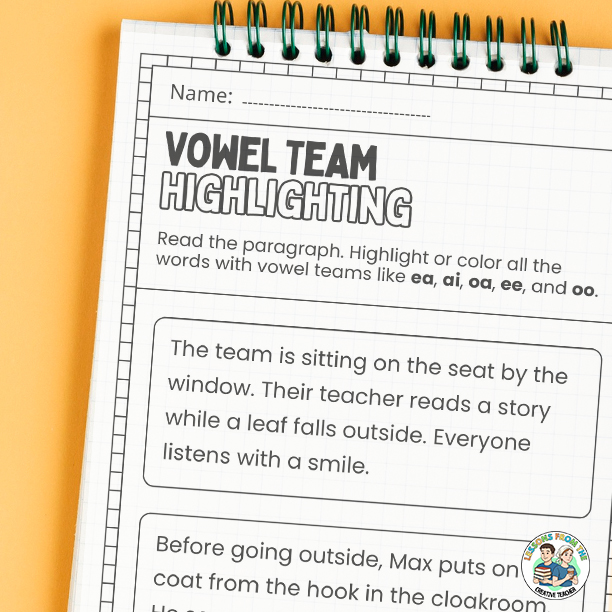
Classroom Tips for Successful Phonics Instruction
Differentiate for Skill Levels
Every classroom has learners at different stages. The great thing about phonics activities worksheets is that you can adapt them easily.
-
For beginners: focus on letter-sound matching and simple CVC words.
-
For advanced students: add challenges like multisyllabic or prefix/suffix words.
-
For struggling readers: use visual aids or extra repetition for reinforcement.
Encourage Daily Phonics Warm-Ups
Consistency makes a huge difference. Spend just 5–10 minutes a day reviewing sounds or patterns using quick phonics activities worksheets.
This small routine keeps phonics fresh in students’ minds — and helps them retain knowledge over time.
Combine with Reading Aloud
Phonics practice doesn’t end with worksheets! Pair your lessons with read-alouds or decodable readers that match the same sound patterns.
Hearing words in context helps kids see how phonics skills apply to real reading. Plus, it builds comprehension and listening skills.
Benefits of Using Printable Phonics Activities Worksheets
-
Low-prep and ready-to-use: Save time with printable worksheets that are easy to print and go.
-
Perfect for centers and small groups: Use them in literacy stations, tutoring sessions, or independent work.
-
Ideal for K–2 learners: Worksheets cover essential skills for early readers at different levels.
-
Encourages self-checking: Answer keys or color-coded activities help students review their work independently.
-
Flexible use: Great for classroom instruction, homework, or extra practice at home.
Printable phonics activities worksheets give teachers the flexibility to teach essential literacy skills in a way that’s fun, structured, and effective — all while reducing prep time.
Conclusion
Strong reading begins with strong phonics foundations — and phonics activities worksheets make it easier than ever to build those skills.
From CVC words to vowel teams, these worksheets turn learning into play while helping students master decoding, spelling, and reading fluency. Whether you’re teaching in the classroom or supporting learning at home, a few minutes of phonics practice each day can make a big difference.
Start today — download these phonics activities worksheets and help your students become confident, joyful readers!

